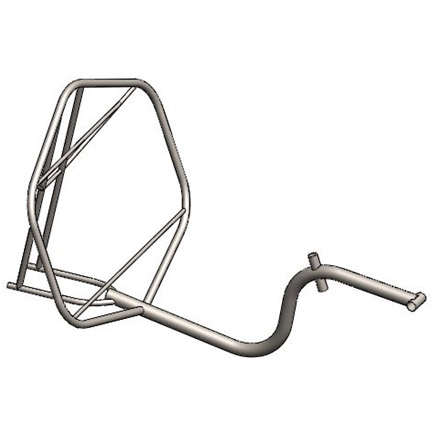University of Oklahoma uses 3D Technology to Create a Mobile Vehicle

The Sooner Powered Vehicle Team (SPV) is a student organization that designs, fabricates, and races a competitive recumbent bicycle. SPV provides the opportunity for young #engineering students to demonstrate sound principles of design through the development of a sustainable and practical transportation alternative.
Executive Summary
Project Definition
For the 2016 AME 4553 Design Practicum course, the Sooner Powered Vehicle team developed a thorough procedure to improve current manufacturing processes for a recumbent bicycle frame. Through analytical techniques learned throughout Mechanical Engineering courses at the University of Oklahoma, the team designed a process to manufacture a carbon fiber frame that will allow future SPV teams to be more competitive at the American Society of Mechanical Engineer’s West Coast competition. The direction of this project was geared toward replacing traditional metal frame material with light-weight, structurally sound composite material that remains cost effective and shortens manufacturing timelines. The two processes compared were that of 4130 Steel tube manufacturing from VR3 Engineering and carbon fiber manufacturing through vacuum bag layup on 3D printed, plastic male molds from Tech-Labs. The team also manufactured carbon fiber specimen around a 3D printed rectangular prism from a small-scale printer at the University of Oklahoma that was used for testing purposes to analyze how the number of layers affects the product’s strength.
Design Chosen
This design was developed by the entire SPV team during the Fall 2015 semester and was held constant for this AME 4553 Design Practicum project. To compare the traditional manufacturing process with the newly proposed carbon fiber manufacturing process, the team set control boundaries on the design of the frame in order to maintain similar size tubing, dimensions, and material thickness. This is important when comparing the two processes because the size and extent of manufacturing is held constant while allowing the team to perform research and analysis on the associated time, cost, and difficulty with each process. To create a carbon fiber recumbent frame, the team utilized 3D printing technology to obtain the entire frame in thin-walled, plastic male molds that would allow the team to perform a vacuum bag layup for a carbon fiber final product.
Design Analysis/Results
In order to determine whether the proposed process would be as durable as steel, FEA testing and physical testing were conducted. FEA analysis was conducted on the recumbent bicycles frame in order to simulate a crash where the rider were to invert. Placing a 2670 N load on the top of the roll cage at a 12 degree angle from the vertical, the maximum stress for 4130 steel and 4 ply carbon fiber was 173 MPa and 128 MPa respectively. Placing a 1330 N load on the roll cage at shoulder height, the maximum stress for 4130 steel and 4 ply carbon fiber was 616 MPa and 376 MPa. Note that the fixed points for the analysis were the seatbelt mounts. Also, the FEA analysis was conducted without the plastic mold within the carbon fiber frame. Physical testing was conducted in order to determine whether the steel or 6 ply carbon fiber would deflect more. A three point bending test was used to test the 3D printed mold, 4 ply carbon fiber, and 6 ply carbon fiber specimens. Using this data the Young’s Modulus for each was calculated and compared to steel. The Young’s Modulus for 4130 steel, 6 ply carbon fiber, 4 ply carbon fiber, and 3D printed mold are 205 GPa, 218 GPa, 71 GPa, and 12.47 GPa respectively. Note that the testing was performed with the 3D printed mold inside the carbon fiber giving us a more realistic representation. Using this data, it may be concluded that the 6 ply carbon fiber will deflect less than the 4130 steel.
Conclusions
Based on the analysis, the project team would use 6 ply carbon fiber material to construct the recumbent bicycles frame. The carbon fiber experiences less stress and less deflection than the 4130 steel. However, the project team would not implement this process for at least a couple of years. More practice needs to be done on carbon fiber layups, particularly on larger parts. The future project team will need to come up with a way to prevent the carbon fibers from pulling through the vacuum bag. The project team will need to also analyze how much weight the epoxy hardener and epoxy resin will add to the overall weight of the frame.




